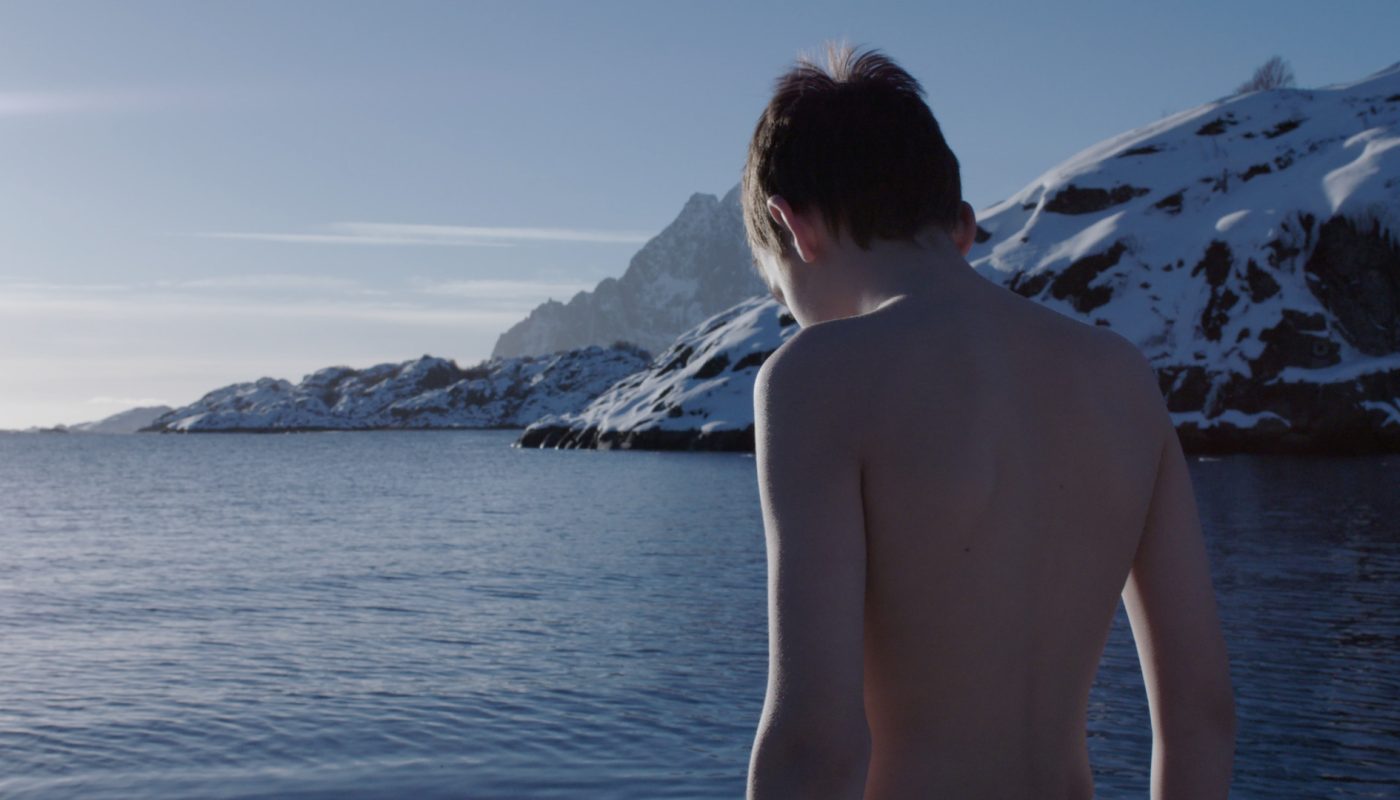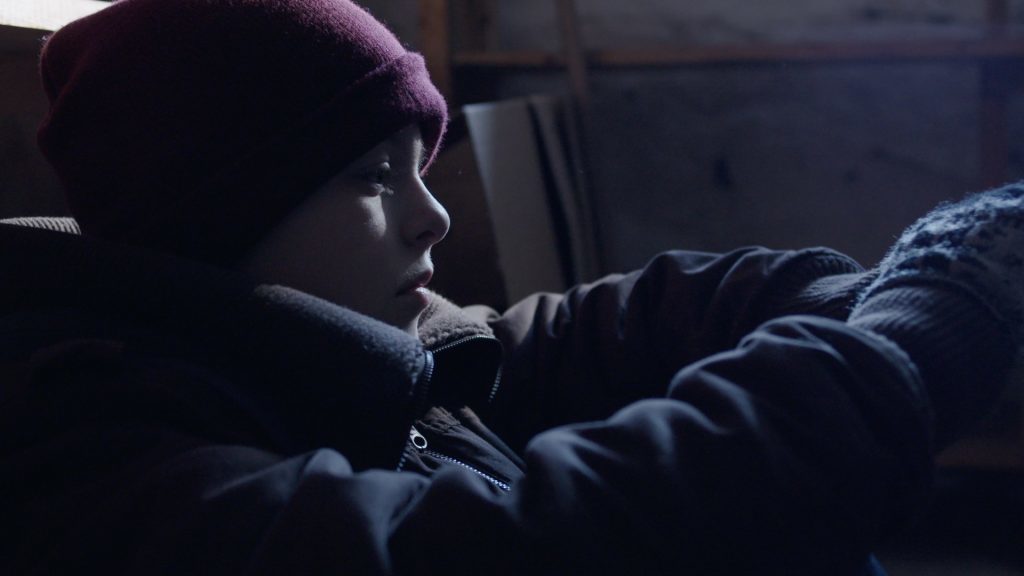

Making a short film with non-professional kid actors in the winter in Northern-Norway
Award-winning director Sverre Kvamme on making his short Wild Beasts.
Geplaatst op 25 april 2018Director Sverre Kvamme won the Award for best international short film during Euregion Film Festival 2018. He now gives an unique insight in making this award winning short.
“I have always wanted to make a film that would show how it was to be a kid at that time.”
Childhood
“I grew up in a small village by a fjord in Norway. When I was around 11 years old, we were a gang that would regularly hang out. We usually met after dinner in the centre of the village. It wasn’t many organized activities for kids in the small community, so we had to start our own action. We broke into the school, old barns, garages, and the local community centre house. We also stole from the store. We once ate a lot of candies from the kiosk of the local weekly cinema. Flirting was a big part of it. We had kissing games, where we would see who could kiss the longest. We switched boyfriends and girlfriends almost weekly.”
“I have always wanted to make a film that would show how it was to be a kid at that time. I wanted to show the energy we had, the urge to discover and explore, how we together pushed boundaries, how we were less vulnerable as a group, how our restlessness guided us into destructive actions, and just how it was to grow up in a small village with 400 inhabitants. Many years later, one afternoon on my way home from school (Nordland College of Art and Film), I saw a gang of kids who had stolen our schools trolley. They were dragging each other around the town, listening to music and dancing on it. I could see my own energetic spirit that I had as a kid in them. After I saw this, I started writing down images and small scenes that I got in my head.”
Core
“One day I went to the sauna with some friends. To cool down from the sauna I went outside. I stood on the dock, enjoying the bright night, the quiet sea, the glowing snow, the stars and the cold breeze. I got a vision in my head of two people embracing each other on the dock, surrounded by the beautiful nature. I ran inside and found a pen and paper and started connecting this to the scenes and ideas that I already had. This was how the story narrowed itself down.”
“My brother Arjo is gay. We haven’t talked much about how it was to grow up in Strandvik, our small village, but I wanted to make a film which also showed how it was to be gay in a small community, as I don’t think this was easy. I remember most people (me included) had prejudices about being gay. By making the main character in the film gay, it made him even more vulnerable.”
“Half a year before I wrote the script to Villdyr (original title Wild Beasts, red.) I had written a longer and more comedic screenplay about a gang of kids trying to make money in a small town. It included many of the aspects that the film Villdyr ended up having, but I think what I ended up with became more authentic and closer to the core of what I wanted to explore.”
The camera as extra kid
“When I write, I imagine what the film will look, sound and feel like. I think about everything; camera movement, framing, sound design, editing, etc. I wrote down a shot list for all the shots, and presented it to my cinematographer, Tora. She understood my vision very clearly, and had several ideas and modifications of the shots I had planned. Tora is a dancer. She is very talented with handheld camera; she handles the camera with organic movements. She is very good at being aware of the actors while filming and she manages to capture the actor’s emotions in a beautiful way.”
“We wanted the camera to act as a seventh kid in the group. The camera should possess the same impulsive energy as the kids running around. We choose to film with wide lenses, and being close to the subjects to get a feeling of being present. We shot everything on a cooler white balance to make it seem even colder. We wanted their warm skin tones to stick out from the cold surroundings.”
“I tried to make them reflect and understand the situations they were put into and become aware of their own feelings.”
“We had eight rehearsals with the actors before the seven days of shooting. We worked very much with improvisation and never with the script. The actors actually never saw the script. The only thing I told them when I asked if they wanted the parts in the film, was that it was a love story about a boy who was in love with another boy, and that they had to jump in the sea and that some of them had to kiss.”
“Tora was always present with the camera during the rehearsals. This was to make them comfortable with having the camera in their face. The first rehearsals we focused a lot on making the actors better known with each other to try to merge them as a gang. We had a lot of theatrical warm up games, and focused on having fun. Later, we had many improvisational exercises where we went into similar situations and feelings that I wanted to see in the film. For me it was important that the actors did not “act” so much, but that they were more themselves. Therefore we often had group talks before or after the exercises. We discussed what we would do in the different situations, and how they felt after the exercises. I tried to make them reflect and understand the situations they were put into and become aware of their own feelings.”
Editing and challenges
“I deliberately choose an editor that I knew had a very different approach to cinema than I have. When I saw the first cut, I was very surprised. David had edited based on feelings and mood and not focused so much on the story. I was very surprised after seeing the first cut, I loved this way of approaching the material, and I think the final result has a lot of his touch in it. We ended up cutting out a lot of dialog, and big parts of scenes.”
“There are many difficulties with shooting in the Lofoten Islands, especially in the winter. First, there’s only a small amount of light during the day, so you have to shoot when there’s light and be done before it gets dark. One day we had to switch shooting days, because a snowstorm prevented us from crossing a bridge between two islands. Another shooting day started with me driving the car into a ditch by the parking lot, it was a dramatic experience since I had four kids in the car. They all screamed and started calling their parents. We spent two hours getting the car back on the road, which again made us delayed so that we didn’t manage to finish the shooting before it got dark.
“Some people say that you should not work with children when making film. Sometimes during the shooting, I felt that the kid’s spontaneous energy that I was trying to capture in this project was working against me. Loud noise-level and small dramas was a part of the shooting days. I also think that it became much more work for the actors than they had thought. I remember some of the actors crying when they ran barefoot through the snow. Nevertheless, they were all patient and focused when it mattered, and extremely brave. It was a challenging shooting period, but I think everyone involved left with rewarding experiences.”
“I remember some of the actors crying when they ran barefoot through the snow.”
